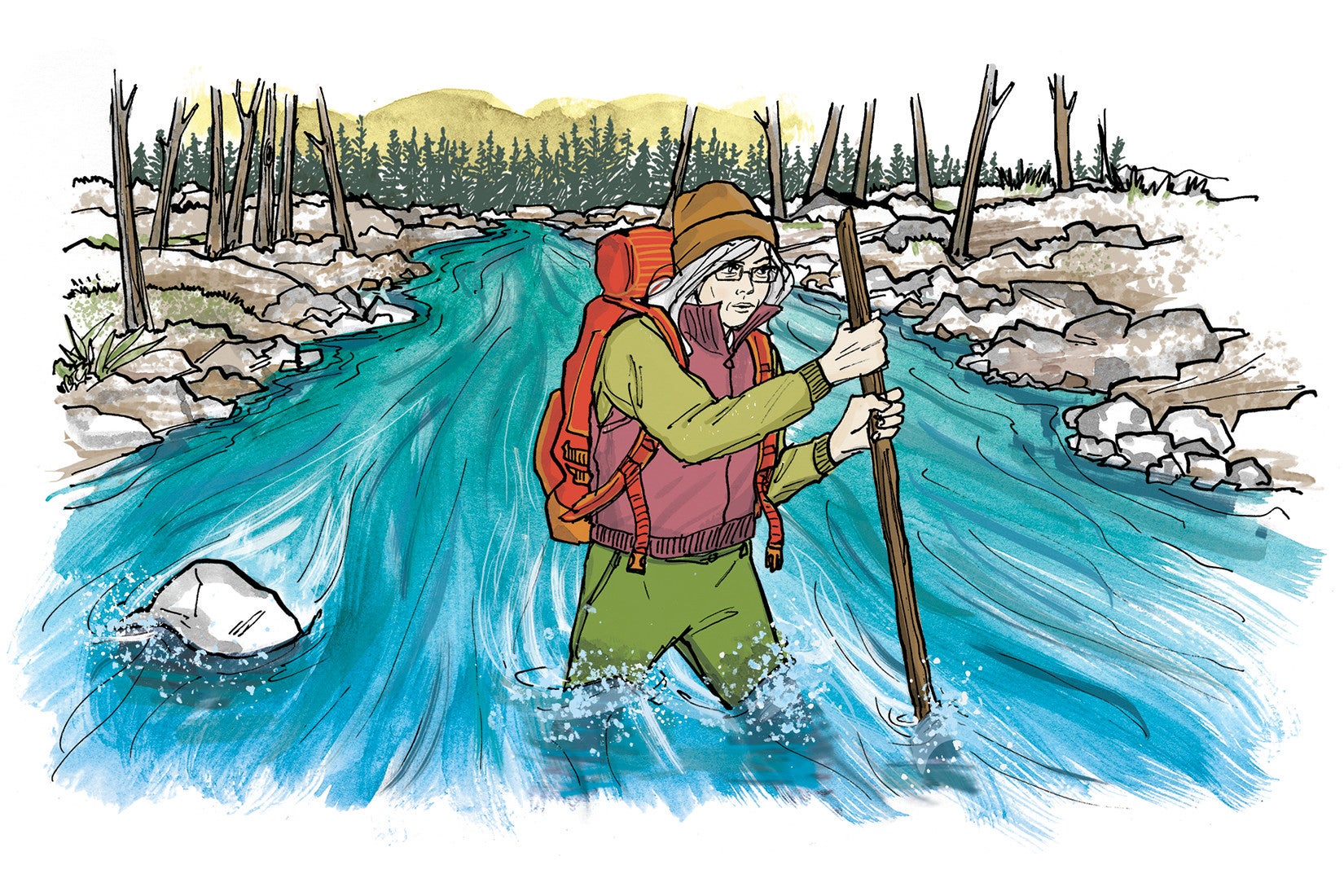How To Cross Rivers Safely

'Illustration by Brett Affrunti'
The waterways around here are still pretty high. How can I tell if they’re safe to cross—and then, how do I do it? –Jack McMasters
There are three main factors to figuring if you should ford: speed, depth, and obstacles.
Speed is the simplest one to gauge. Throw a stick in the water and try to walk alongside it. If it races away, the river is too fast.
Depth is a little trickier. Generally speaking, avoid crossing moderately swift water that’s deeper than mid-thigh. Err on the side of caution when you estimate depth. You might have to turn back after testing the proverbial waters.
Finally, obstacles: Avoid crossing upstream of downed trees, which can hold you underwater if you fall and get hung up in one, or waterfalls.
If your spot doesn’t meet all of these criteria, look elsewhere for wider areas where the water is generally slower and shallower. If there’s been a recent storm, wait 24 hours.
Ready to cross? Unclip all pack straps. Don water shoes if you’ve got them, but if you don’t, leave your boots on. This is no place to slip.
Solo hikers should use a stick or trekking pole, face upstream, and cut a diagonal path against the current. More people means more stability. Groups of two should put hands on each other’s shoulders and cross sideways with the stronger hiker’s back to the current.
Groups of three can all put hands on each other’s shoulders and cross in a triangle formation. Larger groups can form a conga line with the strongest hiker in front and the next strongest in the back.
If you do end up in the drink, shed your pack, point your feet downstream, and paddle like hell for shore.
Got a question for Den Mother? Email it to denmother@backpacker.com.